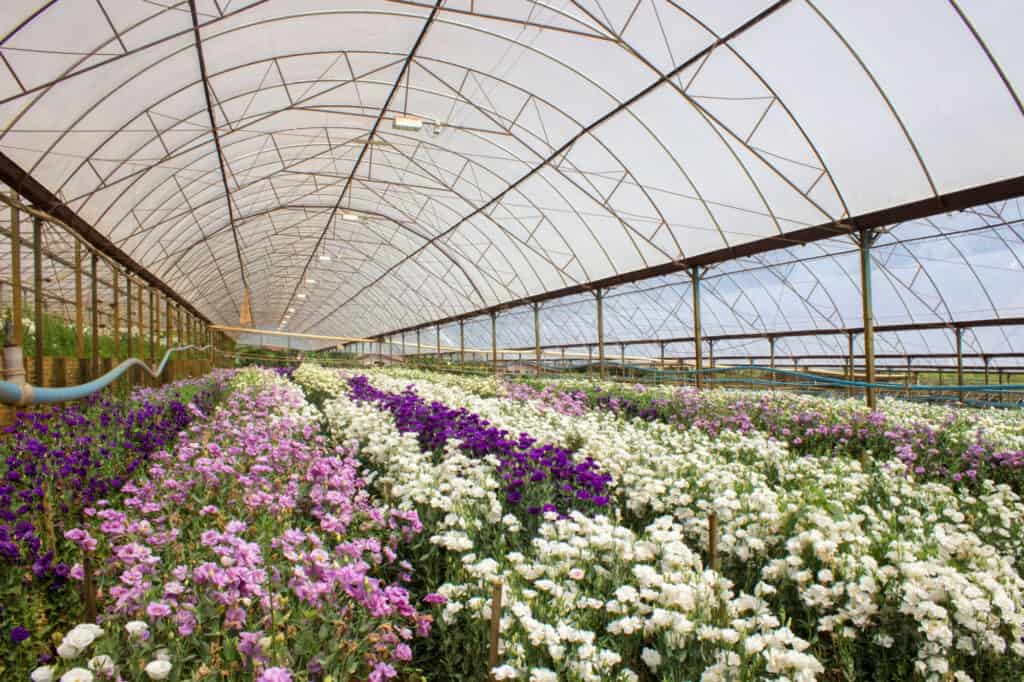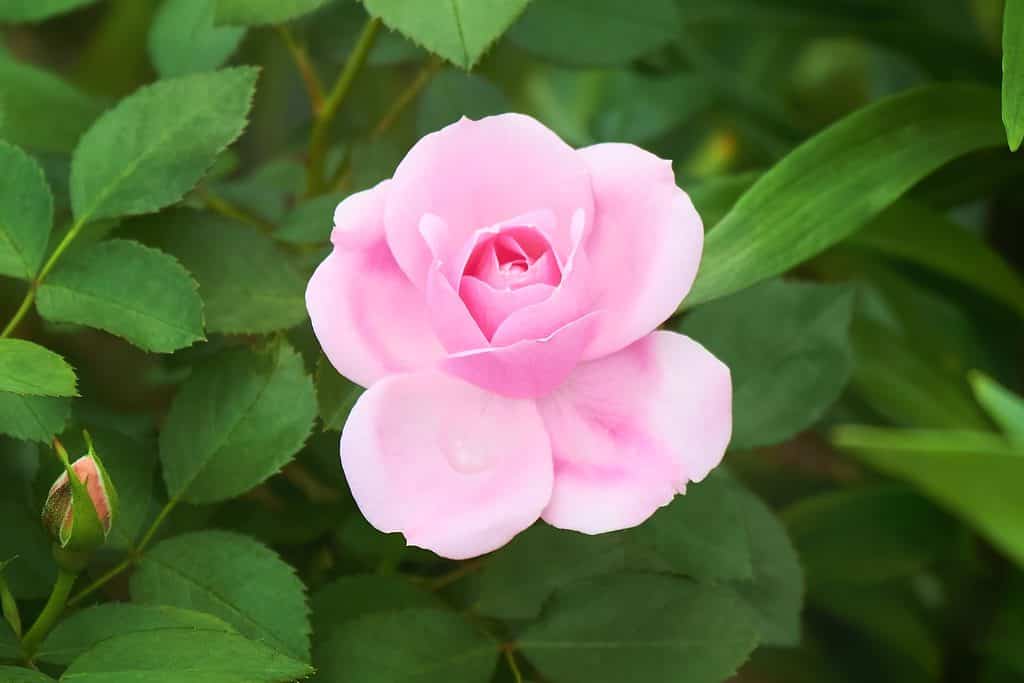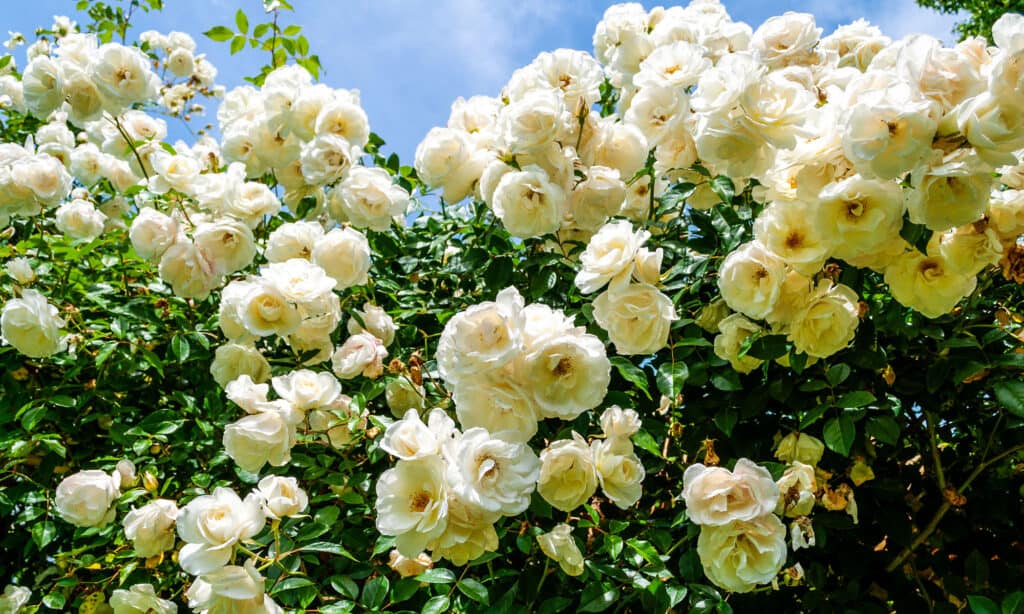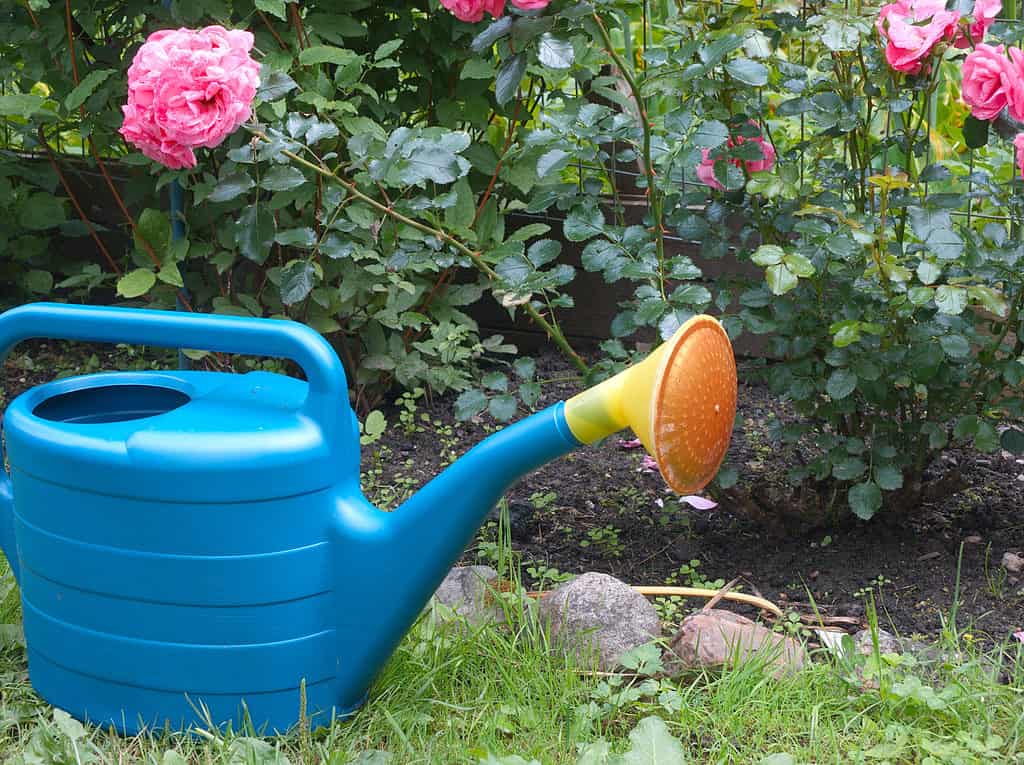Lisianthus vs. Rose: Key Points
- The key difference between rose bushes and lisianthus is their lifespan and watering needs.
- Rose bushes can live for many decades, while lisianthus is most often grown as an annual or tender biennial, living for about two years.
- Roses require deep and frequent watering, while lisianthus is drought tolerant and damaged by excessive watering.
When it comes to finding the perfect flowering plant for your garden, many choices are available. Every gardener has their own preferences, from roses and lisianthus to daisies and sunflowers. But how do you know which one is right for you?
In this guide, we’ll cover everything from the delicate beauty of lisianthus flowers to the vibrant colors of roses. We’ll explain the differences between these two popular options so that you can decide which one suits your needs best. Whether you’re looking for something romantic or a statement piece in your garden, this article should help guide you on what will work best in your unique space. So let’s dive into understanding more about lisianthus and roses!
Comparing Lisianthus vs. Rose

Lisianthus flowers are popular in wedding bouquets.
©ROBERTA BLONKOWSKI/Shutterstock.com
Roses are perennial flowering plants that come in many different sizes and growth habits, from miniature to climbing. They are native to Asia, Europa, and North America.
Lisianthus is a tender perennial plant that has rose-shaped flowers. Because it cannot tolerate frost, it is usually grown as an annual. It is native to the Southwestern US and Mexico.
The two plants have very different growing zones, colors, and growth habits. We will discuss those in detail below.
| Characteristic | Rose | Lisianthus |
|---|---|---|
| Growth Habit | Perennial. Lives for decades | Annual, Biennial, or Perennial depending on climate. Usually lives for two years. |
| Origins | Asia, Europe, and North America | Southwestern U.S. and Mexico |
| USDA Hardiness Zone | Zones 3-8. Minimum temperature of -40°F. | Zones 8-10. Minimum temperature of 10°F. |
| Size | Miniatures 6 inches up to Climbing Roses 12+ feet | 1-3 feet tall |
| Light | Full Sun | Full Sun |
| Soil | Loamy, rich, well-draining | Loamy, sandy, well-draining |
| Water | 2 inches weekly, deeply | 1 inch weekly; allow drying between waterings |
| Common Names | Rose | Lisianthus, prairie gentian, bluebell gentian |
| Color | White, orange, yellow, pink, red, blue, purple, black, light green | White, orange, yellow, pink, red, blue, purple, black, lime green |
| Bloom Time | May to early fall | June to Frost |
| Scent | Scents of tea, fruit, myrrh, rose, and musk | No scent |
Lisianthus vs. Rose: Key Differences

Shrub of pink Canadian rose variety Prairie Joy blooming in the summer garden.
©Mary_AMM/Shutterstock.com
The key differences between Lisianthus and roses are their lifespan and watering needs. Roses live for decades, and lisianthus is short-lived. Lisianthus is drought tolerant and damaged by too much moisture, whereas roses require consistent and deep watering to thrive.
Lisianthus vs. Rose: Hardiness Zones
Roses are considered to be some of the hardiest flowers, being able to survive in temperatures ranging from -40°F. This makes them suitable for growing in various climates and regions as long as they are located within USDA Hardiness Zones 3-10.
On the other hand, Lisianthus is not quite so hardy and can only thrive if planted in warmer environments found between Hardiness Zones 8-11 where temperatures do not drop below 10°F. Therefore, depending on your location and climate conditions, you may want to consider whether it would be more suitable for your garden to grow roses or lisianthus.
Lisianthus vs. Rose: Lifespan

Iceberg roses are hardy and drought-tolerant.
©GAT0/Shutterstock.com
Roses are perennial plants, meaning they live for over two years and bloom yearly for decades. Some gardeners have rose bushes on their property that have been reliably blooming for over 100 years. Even modern hybrid varieties live for more than ten years.
On the other hand, Lisianthus are annual, biennial, or perennial, depending on the climate where they grow. They will typically flower during their second season of growth and die afterward. Although both roses and lisianthus can be beautiful additions to any garden, it is important to understand their differences when deciding which is right for your space. Roses may require more maintenance due to their long-term presence in a garden, while lisianthus may need less attention as it dies off following its second season of growth.
Lisianthus vs. Rose: Care Requirements
Roses are native to Asia, Europe, and North America. They thrive in various climates and soil types but prefer loamy, moist soil rich in organic matter. An ideal rose garden will provide ample sunlight, good drainage, protection from strong winds, and regular watering. Nutrient-rich fertilizers such as compost or manure can help roses reach their full potential by providing essential nutrients for growth and blooming. Pruning regularly helps promote bushier plants with more blooms while also removing dead leaves or branches that may harbor pests or diseases. With appropriate care, the beautiful flowers of roses will bloom all season long!
Lisianthus is a tender plant that is native to dry, arid regions of Mexico and the Southwestern United States. They can also be found in the Caribbean and the northern edge of South America. They prefer to be planted in well-drained soil with full sun exposure and can tolerate pure sand. To ensure healthy growth, they should be watered regularly but not over-watered, as this can lead to root rot or other diseases. Deadheading will also help promote more blooms throughout the season. These flowers typically have long stems, so providing some support, such as stakes or cages, is important. Pruning is also necessary for optimal health and beauty. You should remove any dead or damaged leaves and stems during the growing season for the best results.
Planting Best Practices
Roses are a popular and classic choice for gardens, but it is important to understand how they should be planted. Roses can be purchased as either bare root plants without soil or as potted plants that come in soil. For the best results, roses should be planted in winter or early spring when the plant is still dormant.
On the other hand, Lisianthus is typically purchased as tiny seeds requiring different planting instructions. To ensure successful germination of lisianthus seeds, they need to be sown directly on the surface of moistened soil rather than buried due to their small size. After sowing lisianthus seeds onto the surface of your garden bed, cover them with a light layer of sand and keep them well watered until they have sprouted and established themselves.
Lisianthus vs. Rose: Flowers

Lisianthus comes in many colors.
©AyahCin/Shutterstock.com
The petals of roses are the same shape, with a single round curve at the lower end. This contrasts with lisianthus petals with slightly different curves, creating a softer and more delicate appearance than roses.
The structure of the pistil and stamen of lisianthus is also unique, quite distinct from other flowers such as roses.
Roses and Lisianthus come in many of the same colors. You can grow them both in red, blue, purple, pink, yellow, white, and orange. However, Lisianthus has a lime green variety that can’t be found on a rose bush. There are a few pale green roses, but none as bright as a Lisianthus yet!
When selecting flowers for your garden, it’s important to consider these differences between roses and lisianthus to choose the best option for your needs.
Watering Requirements

Consistent watering is required for roses to thrive.
©iStock.com/victorass88
Lisianthus prefers 1 inch of water per week. If it doesn’t rain, water the plant at the base, avoiding the leaves. Young seedlings should be kept moist until mature. Soaker hoses are the easiest way to water them. Lisianthus is drought-tolerant, so missing a watering or two shouldn’t be an issue.
It’s best to water in the morning so the liquid will have time to be absorbed by the soil before the sun’s heat evaporates it. Letting the earth dry out some before nightfall will help prevent diseases. Lisianthus requires soil that drains well so that all excess water can escape and not pool around the roots.
Mature lisianthus needs less water when temperatures aren’t hot. In their native habitat, they enjoy hot summers with periods of drought, so if grown in damp climates, they suffer.
Gardening enthusiasts should give roses 2 inches of water every week during the spring and fall and increase the amount to every three or four days when the weather is hot and dry. Soils with porous properties should receive deeper soakings as well.
Water the soil deeply and thoroughly, as a light sprinkling won’t be effective and can actually be damaging. Without enough water, the plant’s roots won’t grow deep enough to support it, leaving it vulnerable to injury from gardening tools and fertilizer burn.
The photo featured at the top of this post is ©
Thank you for reading! Have some feedback for us? Contact the AZ Animals editorial team.






